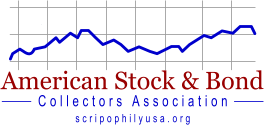by Mario Boone
South Africa is not only one of the most beautiful countries in the world, it is probably also one of the most fascinating, with a history that goes back as far as mankind. The first permanent European settlers were Dutch. Under the orders of the Dutch East India Company (VOC), Jan van Riebeeck founded in 1652 the first white settlement at the Cape of Good Hope. It was the beginning of a long colonization process by which Dutch, German and French colonists (so-called Boers) went deeper and deeper into the unexplored African inland, often leading to bloody conflicts with the native inhabitants, the Khoisan and Bantu tribes such as the Xhosa and Zulus. In the beginning of the 19th century, the British took control over the Cape and many Boers went further north to establish their own republics: Transvaal and Orange Free State. However, Great Britain didn’t give in and tried to unite the whole of South Africa under its authority. In 1910, and despite two Boer Wars led by the legendary Paul Kruger, London achieved its goal. In the following years, South Africa increased its autonomy towards Great Britain and went more and more its own and well known way.
For centuries, South Africa had an economy largely based on agriculture and without any major industries. As a result, very few old stocks are known.
The discovery of Diamonds
In 1869, this was all to change. It that year, the discovery on the banks of the Orange River of the Star of Africa, a 83,5 carats rough diamond, became the catalyst for the great diamond rush. While at first ‘wet’ diggings along the banks of the Orange and Vaal rivers were pursued, it was only a matter of months before major finds were made ‘inland’. Six major diamond mines were discovered during the “Great Rush” (1869-1871) : Bultfontein, Koffiefontein, Jagersfontein, Dutoitspan, De Beers and Kimberley (the richest of all). From than on and up till today, no other country would mine more diamonds than South Africa does. In those early days, some 3600 different mining claims were bought by individual persons. Consolidation (economics of scale) made of course much sense and after a change of law in 1876, this was exactly what happened. After a fierce battle for overall control of the diamond fields between Barney Barnato and the legendary Cecil Rhodes, the latter took de facto control over almost the complete South African diamond industry. He amalgamated his holdings into the De Beers Consolidated Mines. By 1929, the German-originated Oppenheimer family took control over De Beers and continues up till today to run what is by far the world’s biggest diamond business.
The discovery of Gold
Even more important than diamonds for the South African economy was the discovery of gold in 1886 when George Harrison found an outcrop of the main reef of gold-bearing conglomerate near Johannesburg. Unlike the earlier Californian and Australian discoveries, this field was not an alluvial deposit where thousands of freelance gold diggers could work, it was the tip of low grade reefs which could be mined only at depth and at great initial capital cost. There was very little capital in South Africa at that moment, so many mining companies were founded and listed on the stock exchange in London. Here again, consolidation took place among the successful companies (i.e. those who had claims where enough gold could be extracted to make a profit) while many others were quickly dissolved because of lack of fortune. While for diamonds, only ‘De Beers’ really stands out, there are seven big gold mine companies who make that South Africa was, and still is, the world’s largest gold producer: Gold Fields of South Africa (founded by Rhodes), Rand Mines (now Randgold), Johannesburg Cons. Investments, General Mining (now Gencor), Union Corporation (now Gencor), Anglo American (founded by Oppenheimer, now AngloGold) and AngloVaal. Up until today, South Africa has produced no less than 35% of all gold ever mined in the world!
Collecting South African stocks & bonds
The historical significance of collecting South African certificates is obvious from the above text. Yet, there is more: several pieces are very attractive, most ones are in English and sometimes with interesting foreign influences. Overall, there are a few hundred different pieces known, though almost all are quite rare because of the low number of stocks issued (most were small companies), yet prices tend to be rather moderate thanks to the fact that Scripophily is not yet very well known in South Africa.




